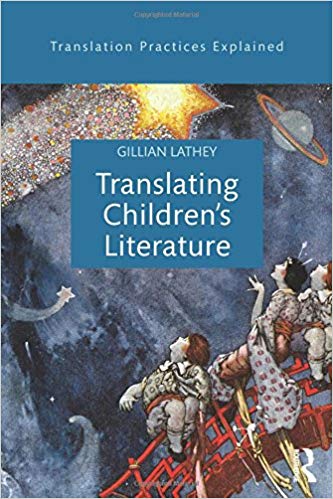Translating Children’s Literature

Book Details
Translating Children’s Literature
Gillian Lathey, London: Routledge, pb. 978 1 1388 0376 3, 2015, £24, 162pp.
Lathey’s study on translating children’s literature starts with an extensive introduction that is especially valuable for self-learners and students of translation. Readers are ‘warned’ that translation of books for children is underestimated, but also informed that boundaries between adult and non-adult fiction are fluid. The author stresses that the ‘adult–child duality inherent in all books for children’ (p.2) requires translators ‘to address all layers of meaning’ (ibid.) and thus reveals that translation of children’s literature may be particularly demanding. She illustrates, with reference to other texts and quotes, what is a structural feature of this course book.
The first quote from a writer commenting on translation of texts for children is by Jill Paton Walsh, and the first extracts are from literary texts by Roald Dahl. Walsh’s statement contains ‘an enlightening encouragement to any writer or translator attempting to understand the artistic potential of writing for the young’ (p.3); and Dahl’s extracts illustrate how the same passage differs when addressing adult or child readers.
The aim of the book is to assist ‘would-be translators’ (p.11) – bridge-builders between children and works of literature written in foreign languages. The organisation of this course book with didactic discussion points, exercises and further reading helps readers to believe that the author’s goal can be achieved, because the text offers various types of helpful stimulus for effective work to students and all those who wish to be informed about contemporary approaches to the translating of children’s literature.
The author puts special stress on the narrative communication with the child reader (Chapter 1), the translation of cultural markers and intertextual references (Chapter 2), and on the translating of the visual and audio aspects of texts for children and young people (Chapters 3, 4 and 5). Chapter 6, discussing retellings, retranslation and relay translation, all typical features of children’s literature and the canon, 22 concludes with the warning that future translators ‘should also be aware that their published translation might be used as the basis for a relay translation without acknowledgement or payment’ (p.125). The last chapter, focusing on children’s publishing, globalisation and the child reader, gives further invaluable insight into the copyright status of translators’ work and their working with editors and publishers.
This book by Lathey thus addresses the main aspects of translation of (children’s) literature and is therefore highly recommended.
Review by Darja Mazi-Leskovar [Darja Mazi-Leskovar is Associate Professor of Literature with a special interest in children’s literature and translation at Maribor University, Slovenia.]
